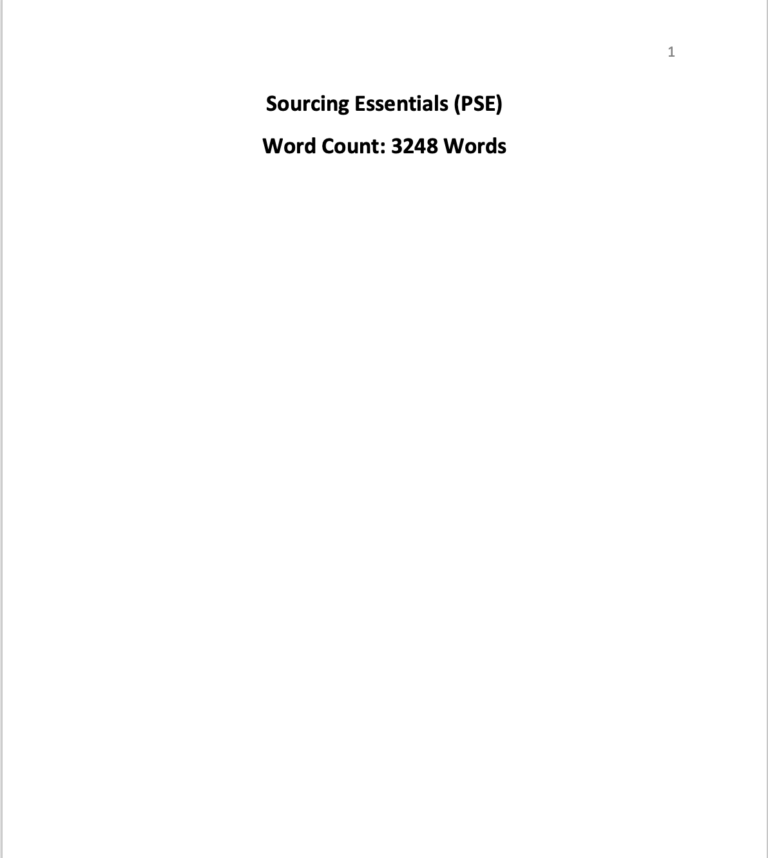-80%
Question
There has been extensive research evidence that links people management practices with improved business performance. Selecting one piece of research, critically evaluate its main findings and identify three factors that need to be in place to create an environment that will maximise the effectiveness and impact of people management within organisations. Fully justify these with reference to your wider reading.
Solution
There is a significant relationship between people practices and organisational performance. Among the key practices are learning and development and effective recruitment, selection, and on-boarding. A meta-analysis by Rauch and Hatak (2016) that examined 56 studies, focusing on the small and medium sized enterprises (SMEs) revealed that there is a positive and significant correlation between the HR-enhancing practices and firm performance. In the high-technology sectors, particularly those characterised by rigid and tight labour conditions, the relevance of HR practices is high to ensure that the workforce has the right skills and competencies, in line with the current and future needs. However, there is a difference between the SMEs and large organisations concerning the implementation of the HR practices to lift their performance. These differences involve the resources and time. This introduces the importance of organisational strategies focusing on enhancing the employees’ performance, which is the foundation of the discussion below.
The relationship between HR practices, empowerment, and enhancing the employees’ skills to increase the organisational performance is anchored on human capital development. Drawing from the human capital theory, human beings enhance their productivity and capacity through skills training and education. As noted by Pereira et al. (2020), human capital entails the investment on developing the workforce skills and competencies in line with the current and future needs. Through evidence from the business clusters, Pereira et al. (2020) demonstrated that human capital is the foundation of developing resilient and high performing companies. Relating the human capital with the resource-based view (RBV), organisations focus on developing the right resources. Employees’ skills and knowledge are part of the assets and capabilities. As noted by Collins (2021), RBV is an essential strategic human resources management with the potential of resulting to the company’s competitive advantage. Companies, both the SMEs and the large corporations should invest in developing the employees’ capabilities.
HR practices, including recruitment and selection, learning and development, and performance management are part of organisational design aimed at ensuring that the organisation has the relevant skills and competencies for transformation and competitive advantage (Elrehail et al., 2019). At Almarai, employees are acknowledged as the most important asset. Therefore, the company has invested in attracting the right individuals, training, and offering sufficient resources to meet their requirements. Almarai has invested in regular performance appraisal to examine the employees’ strengths and weaknesses. These insights, as described by Jungert et al. (2018) are essential in developing learning and development programs and investing in providing a work environment that influences development through autonomy and learning from others. Part of Almarai’s strategy is to increase the workforce awareness of issues surrounding health and safety. This is important in their satisfaction, motivation, and retention, which are fundamental in sustainable performance, growth, and development.
A new HR practice should focus on examining the micro and macro environmental factors and using the insights in developing the learning and development strategies. Rauch and Hatak (2016) study outlines some of the key HR practices to enhance performance, including equipping the employees with knowledge and skills, empowerment, and motivation. Although these factors are suggested in the SMEs context and are relevant compared to the large firm dimension, they can also be applied but should be drawn from an evaluation of the micro and macro elements (King and Vaiman, 2019). This relationship can be described from the Warwick model, which encompasses five elements of macro environmental forces, micro aspects, business strategy, HRM context, and HRM content. Large corporations, such as Almarai are characterised by a supportive working culture and structure, which describe the inner context. In the outer context, the factors influencing the new HR practices include the technical, socio-economic, and competition (Tiwari et al., 2019). At Almarai, for instance, it acknowledges that the technology advent is crucial for the growth and competitiveness of the firm. Therefore, learning and development for the employees has focused on equipping the employees with the information and communication technology skills.
The new HR practices to lift performance involve a transition from the traditional approaches and a consideration of new strategies, including the structure. An example is the shift from hierarchical or matrix to flat structure where employees are involved in the decision-making process, as described by Cagliano et al. (2019)……..
Please click the icon to access this assessment in full


